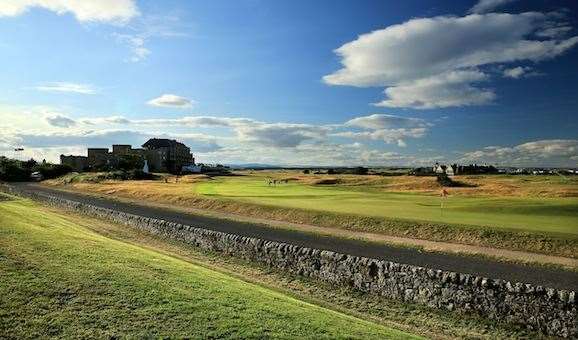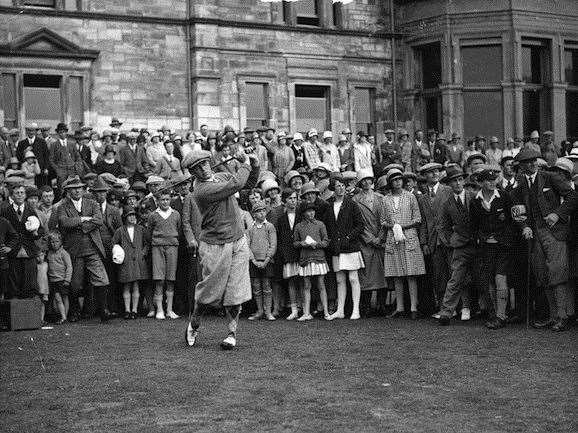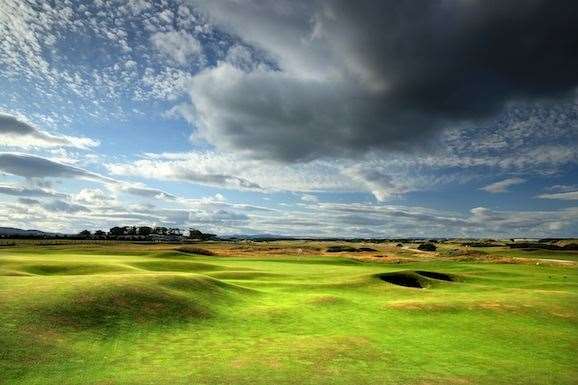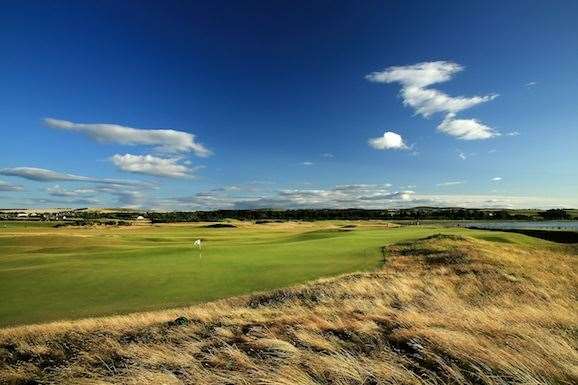The Old Course at St Andrews is hosting its 29th Open Championship this week. Brendan James looks at the stories behind each hole.
BY BRENDAN JAMES AT ST ANDREWS
In five days, one man will be proclaimed the Champion Golfer of the Year at the Home of Golf. He will follow in the footsteps of the game’s greats like Bobby Jones, Sam Snead, Peter Thomson, Jack Nicklaus, Nick Faldo and Tiger Woods to lift the Auld Claret Jug on the steps in front of the Royal & Ancient Golf Club clubhouse overlooking the Old Course of St Andrews.
The Open Championship returns to St Andrews for the 29th time this week and the winner will join that elite club of players to win on golf’s holy ground. Their skill and patience will be tested by a course that is regarded as one of the world’s best, with each hole having played its part in determining Open winners and losers since it first hosted the championship in 1873.
 The Road Hole was where Kel Nagle holed a pressure par putt to fend off a charging Arnold Palmer in winning the 1960 Open. PHOTO: David Cannon/Getty Images
The Road Hole was where Kel Nagle holed a pressure par putt to fend off a charging Arnold Palmer in winning the 1960 Open. PHOTO: David Cannon/Getty ImagesSome holes, like the Road Hole 17th and the 18th with its Valley of Sin short of the green, are familiar in the history of the Open, but all 18 holes have a story to tell.
1ST, BURN 376-yard, par-4
In 1946, Welshman Dai Rees was tied for the lead heading into the final round when he hit his drive out of bounds, before reloading and hitting his second drive into the Swilcan Burn. He shot an 80 and finished five shots behind winner Sam Snead. In 1984, Ian Baker-Finch was contending when his approach rolled back into the burn.
2ND, DYKE 453-yard, par-4
Americans Craig Wood and Denny Shute finished tied in 1933 and were sent into a 36-hole play-off. Wood double bogied the 2nd twice in the play-off and lost the championship by five strokes. The following year he was the victim of Gene Sarazen’s albatross winning ‘Shot Heard Around The World’ at the Masters.
3RD, CARTGATE (Out) 397-yard, par-4
Arnold Palmer made his last appearance in the Open in 1990. The golfing world was sweating on him making the cut but a three-putt from 20 feet for bogey here ultimately resulted in him missing the then lowest-ever cut in a 72-hole Open cut by one stroke.
4TH, GINGER BEER 480-yard, par-4
This is one of the Old Course’s most demanding holes … even for the eventual winner. In 1990, Nick Faldo lost his way only twice during the 72 holes. He triple bogied the 17th in the second round and bogied the 4th during the final after failing to get up-and-down from a bunker … his only sand shot for the week.
5TH, HOLE O’CROSS (Out) 568-yard, par-5
Jock Hutchison was born in St Andrews but later moved to the United States where he became a naturalized citizen in 1920. A year later, he became the first American to win the Open, with his eagle here in the play-off over amateur Roger Wethered proving pivotal.
6TH, HEATHERY (Out) 412-yard, par-4
Michael Campbell led the 1995 Open heading into the final day after a third round 65. But a second of back-to-back bogies here stalled his challenge and he never recovered. His final round 76 left him one shot away from a play-off spot in a tie for third.
7TH, HIGH (Out) 371-yard, par-4
Weather is always a factor of any Open Championship but in 2010 the wind was so strong at St Andrews that play had to be suspended. The tipping point came on the 7th green when Jason Dufner reported to officials that he couldn’t stop his ball from rolling.
8TH, SHORT 175-yard, par-3
Jock Hutchison’s victory in 1921 had a highlight here at the 8th when he made a hole-in-one in the first round using one of his ‘ribbed’ or grooved irons, which allowed him to get backspin on the rock hard greens. Former winner J.H Taylor likened the clubs to “buying a shot out of a shop.”
9TH, END 352-yard, par-4
Having made his ace at the 8th, Jock Hutchison hit his tee shot more than 300 yards to the green and looked for all money to be a second hole-in-one until a spectator ran onto the green and quickly removed the flag, and watched as the ball hit the hole and stayed out.
10TH, BOBBY JONES 386-yard, par-4
With nine holes to play in the 1939 Championship, the Open was Dick Burton’s to lose. His tee shot here sliced wildly across the 9th fairway and finished in a thicket of heather. But his recovery was first class, and he walked to the next tee after a two-putt par and he held on to win by two strokes.
11TH, HIGH (In) 174-yard, par-3
Bobby Jones made his first appearance in the Open in 1921 and given his mindset, it could have been his last, thanks to the Old Course’s 11th hole. He found ‘Hill’ bunker and on his third attempt to get out, his ball flew into the Eden River. The young Jones tore up his card and threw it into the river before storming off.
 Bobby Jones drives from the first tee during a practice round at St Andrews in 1927. PHOTO: Getty Images
Bobby Jones drives from the first tee during a practice round at St Andrews in 1927. PHOTO: Getty Images12TH, HEATHERY 348-yard, par-4
In 1984, Tom Watson was well in contention to add to his collection of Claret Jugs and make a lean sweep of Open wins on Scottish courses. While many point to the bogey on 17 as where he lost to Seve Ballesteros, it must be remembered he had to take a penalty drop here after hitting into the heather.
13TH, HOLE O’CROSS (In) 465-yard, par-4
Arnold Palmer was renowned for his final round charges and in 1960 he mounted his push for the Open starting here. He birdied the 13th, 15th and 18th holes but it was one stroke shy of a tie with Kel Nagle, who is forever remembered as the Centenary Open Champion.
14TH, LONG 618-yard, par-5
This hole seems to conjure up drama at almost every Open. In 1921, Roger Wethered trod on his ball on the rough and was penalised a stroke, which cost him the win. In 1970, Doug Sanders missed a three-footer to extend his lead to two over Jack Nicklaus, who, 25 years later, took a 10 here when he took four shots to get out of Hell Bunker.
15TH, CARTGATE (in) 455-yard, par-4
James Braid was already an Open Champion in 1905 and he was looking to win for the first time at St Andrews. He found a bunker off the tee and hit his next over the fence alongside the railway tracks. He played over the fence back onto the course and took a double bogey six.
16TH, CORNER OF THE DYKE 423-yard, par-4
Braid repeated his railway track experience on the very next hole. With his second shot from a bunker now lying on the rail line, he needed two attempts to get the ball back in play and he finished with another double bogey but still cruised to win by five strokes.
17TH, ROAD 495-yard, par-4
Tom Watson let his chance slip here in 1984, while in 1978 Tommy Nakajima was on the first page of the leaderboard when he rattled off a nine after being caught in the Road Hole bunker. A few days later in the final round, Kiwi Simon Owen was leading the Open on the 17th tee but the same infamous bunker cruelled his chances of a win and Jack Nicklaus had another Open victory.
 Costantino Rocca celebrates his birdie putt on the 18th green to force a playoff with John Daly in 1995. PHOTO: Stephen Munday/Getty Images.
Costantino Rocca celebrates his birdie putt on the 18th green to force a playoff with John Daly in 1995. PHOTO: Stephen Munday/Getty Images.18TH, TOM MORRIS 357-yard, par-4
Ultimately, this is the hole where Open dreams are made and nightmares are relived over, and over. Doug Sanders says there isn’t five minutes that go by when he doesn’t think about missing THAT putt from three feet to win the 1970 Open, which he ultimately lost in a play-off to Jack Nicklaus. Years earlier, in 1927, Bobby Jones was carried off the green on the shoulders of the St Andrews townspeople as their new Champion. In 1984, Seve Ballesteros provided one of the iconic images of the Open when he birdied on Sunday afternoon to win. And then there was Costantino Rocca’s spill of emotion in 1995 when he holed a birdie putt through the Valley of Sin to force a play-off with John Daly.
There will be more drama over the four days of this year’s Open Championship, but where will it happen out on the Old Course is anybody’s guess.
Related Articles

The Aussies at the U.S Women’s Open

Sadom Claims Korea Open Title, Books Spot at The Open
















